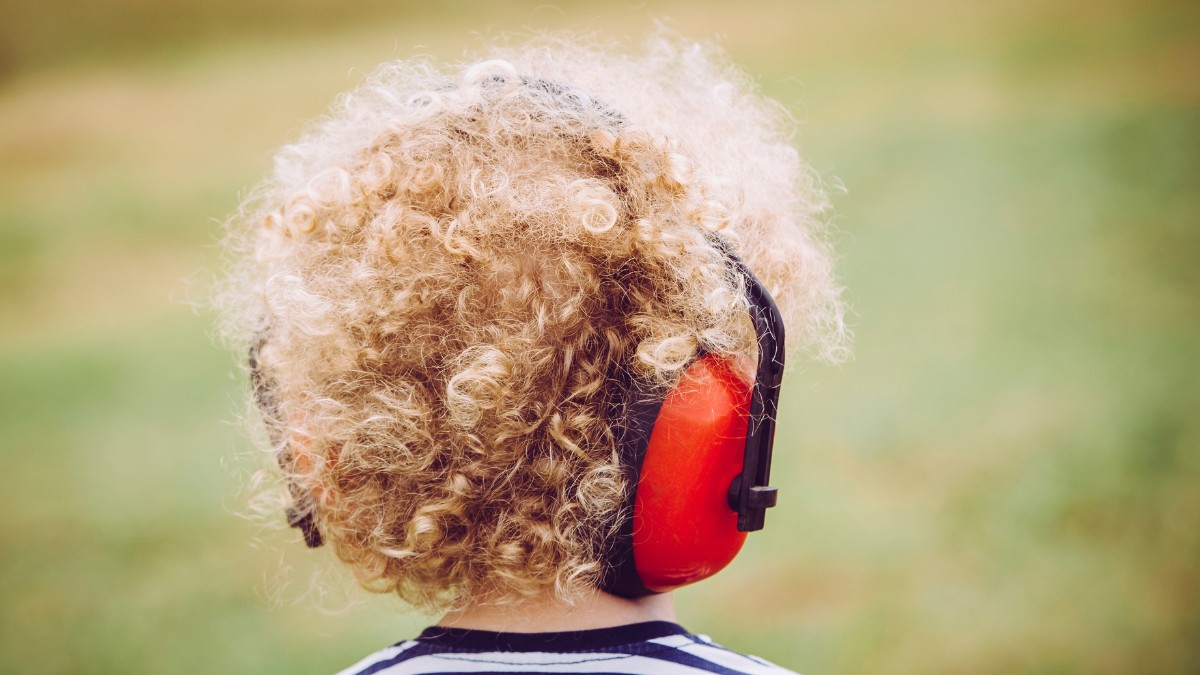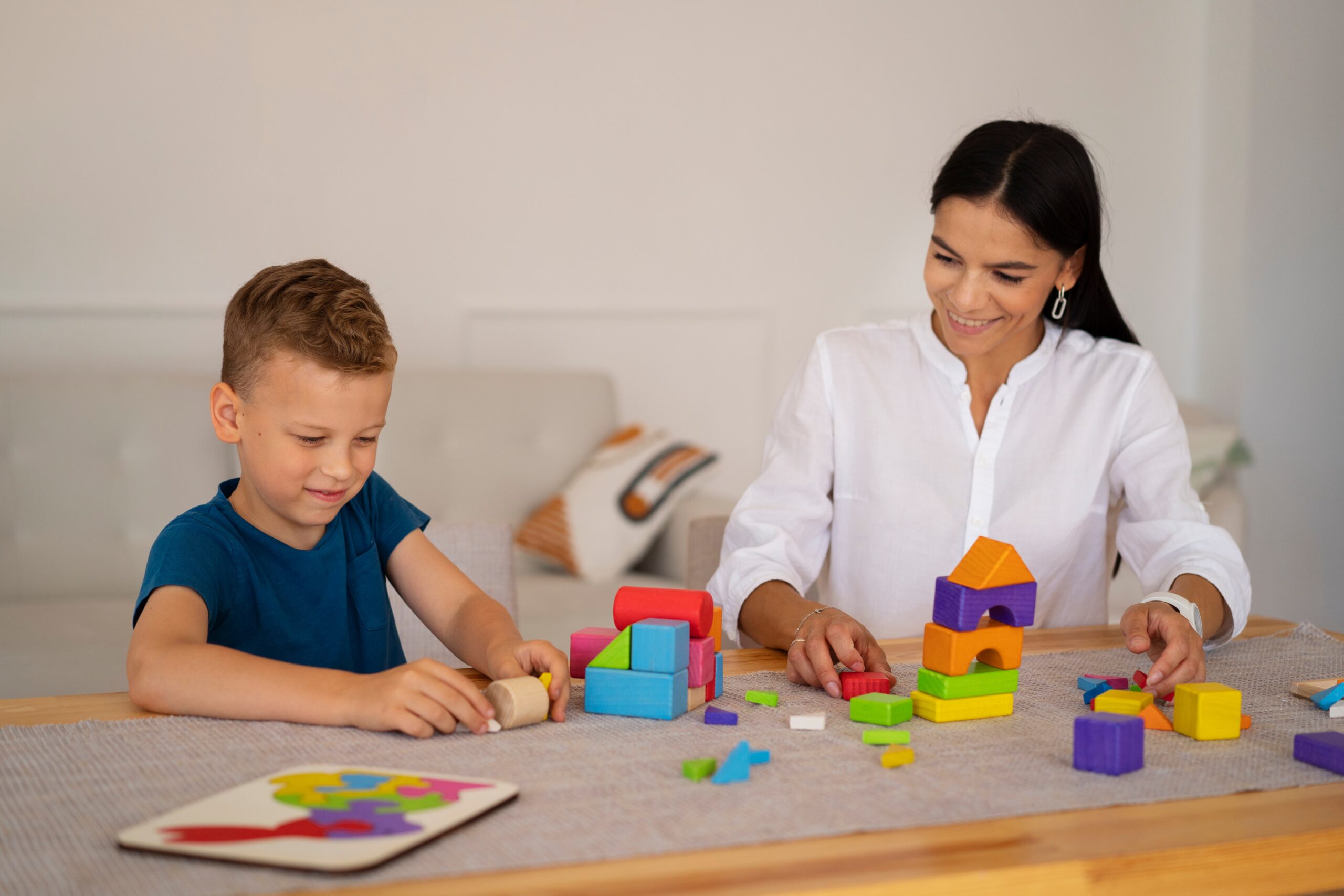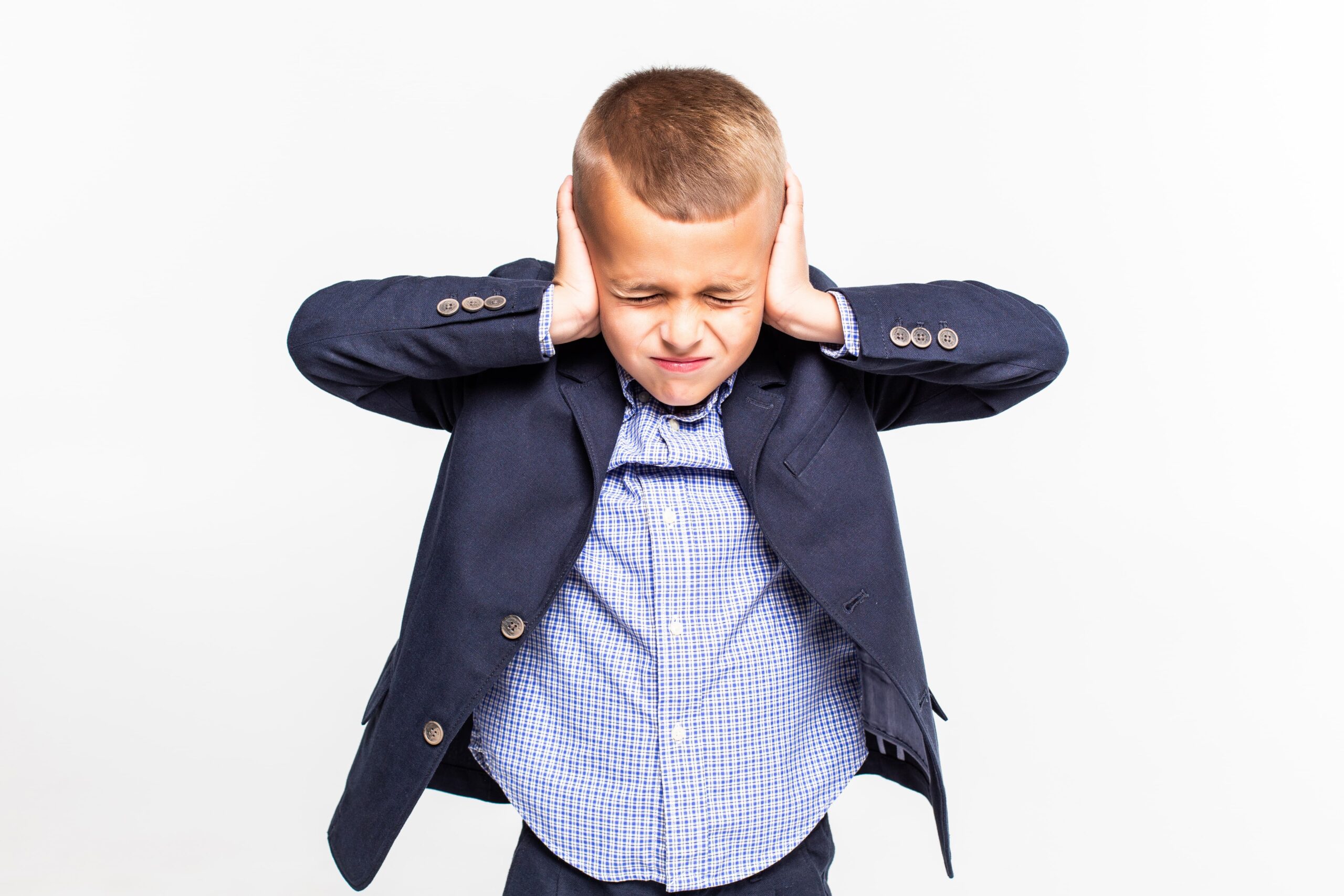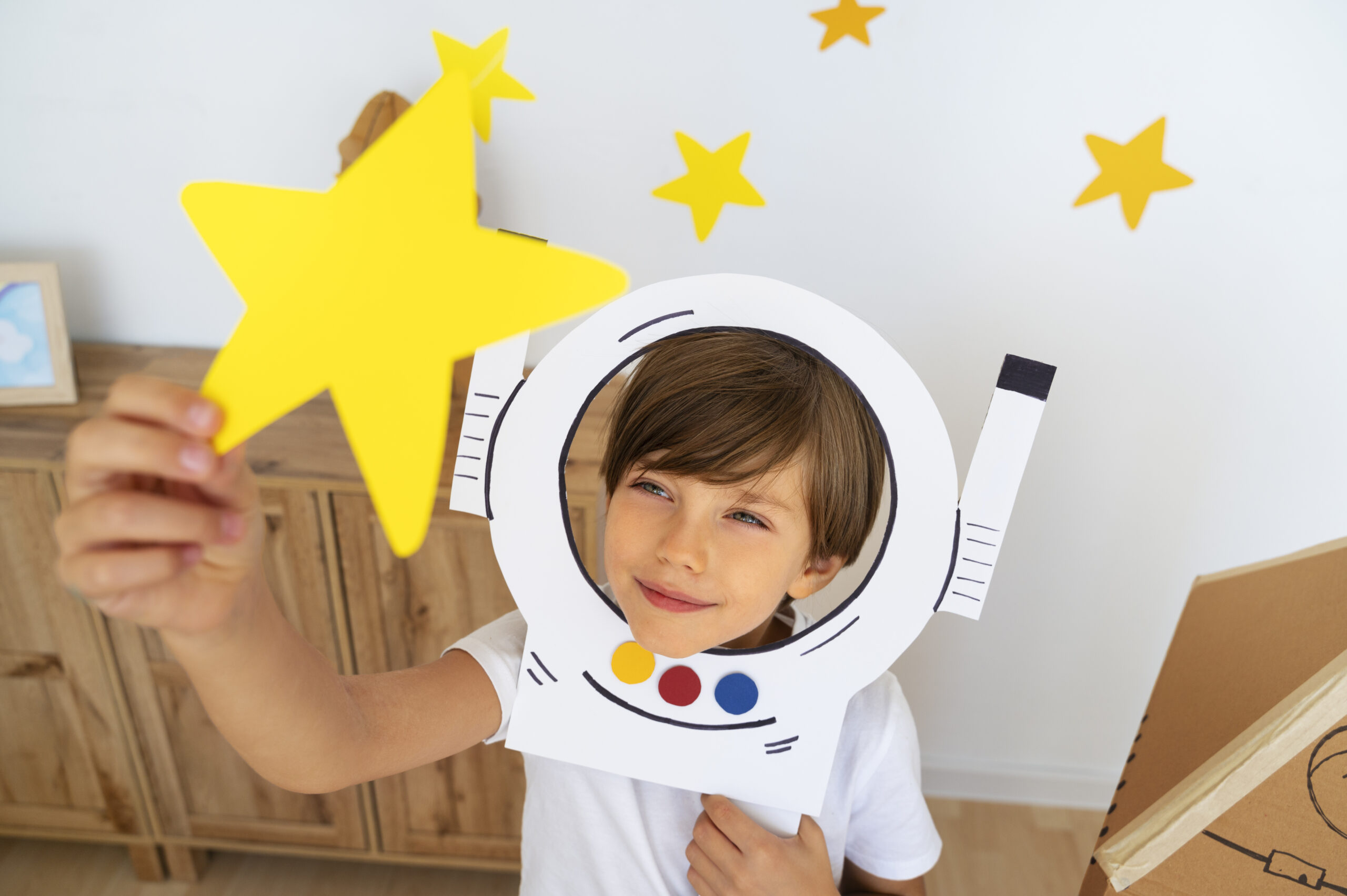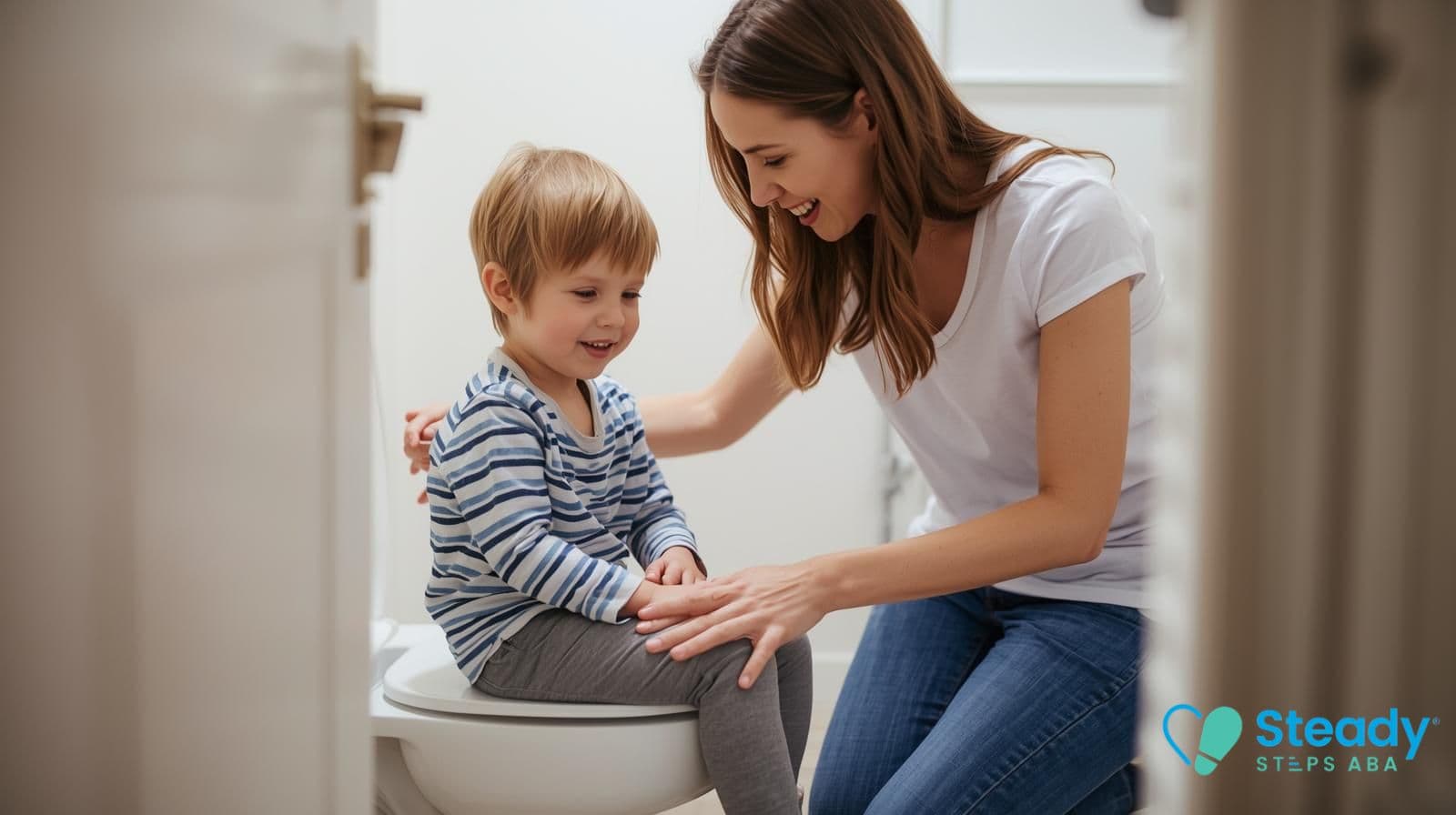Key Points:
- Noise-cancelling headphones can significantly help individuals with autism by reducing auditory overload and increasing focus.
- Understanding when and how to use them properly is essential for effectiveness.
- Parents should consider comfort, fit, and sensory preferences when choosing headphones.
Auditory hypersensitivity is a common experience for individuals on the autism spectrum. According to research, up to 70% of autistic children report decreased sound tolerance. These sensitivities can lead to anxiety, meltdowns, and avoidance of daily activities, especially in noisy environments like schools, grocery stores, or public transit.
Noise-cancelling headphones offer a simple but powerful way to reduce auditory overload and create a sense of calm and control. In this article, we’ll go over the benefits of noise-cancelling headphones for individuals with autism, tips for choosing the right pair, and how to use them effectively as part of a broader sensory support plan.
Do Noise-Cancelling Headphones Help With Autism?
Yes, noise-cancelling headphones can be highly beneficial for individuals with autism. They reduce auditory stimuli, helping manage sensory overload, support self-regulation, and improve focus in overstimulating environments like schools, stores, or public transportation.
For many autistic individuals, sensory sensitivities are not just a minor inconvenience—they can be deeply distressing. Noise-cancelling headphones offer a simple yet powerful tool to help navigate daily life with greater ease and comfort. They are especially helpful in unpredictable settings where loud or constant noise can lead to meltdowns or anxiety.
Why Do Children With Autism Benefit From Noise Reduction?
Children with autism often experience heightened sensitivity to sound. Everyday noises—such as a vacuum cleaner, a school bell, or even background chatter—can feel overwhelmingly loud or painful. This sensitivity is part of what’s known as sensory processing differences, which are common in autistic individuals.
When a child is constantly bombarded by overwhelming noise, it can trigger anxiety, irritability, or complete shutdowns. This can interfere with learning, communication, and overall emotional regulation. Noise-reduction strategies like noise-cancelling headphones offer a buffer against these environmental stressors, helping a child stay calm and focused.
What are the Benefits of Noise-Cancelling Headphones for Autism?
Noise-cancelling headphones don’t just block noise—they can make life more manageable for autistic individuals in a variety of settings. The benefits are both psychological and practical.
Here’s how they help:
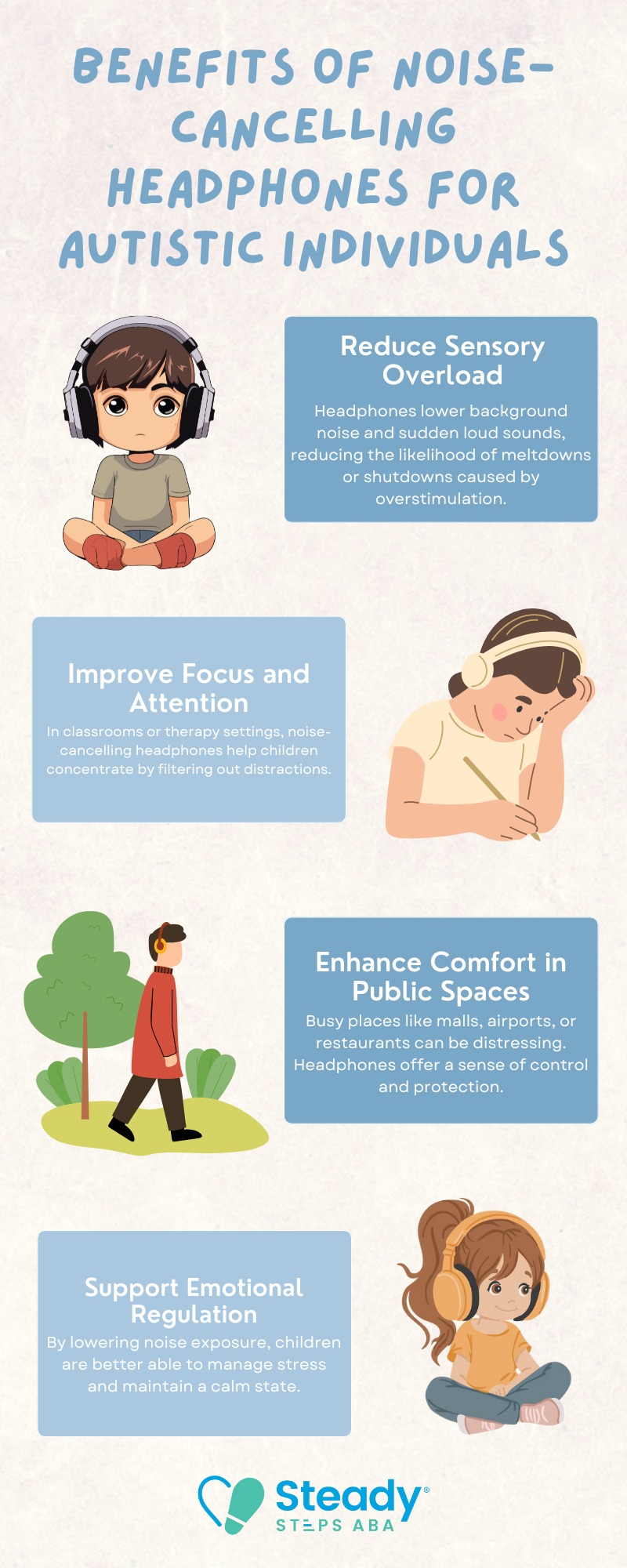
When Should Children Use Noise-Cancelling Headphones?
Children with autism should use noise-cancelling headphones during situations that trigger sensory overload, such as loud public places, transitions, or noisy classrooms. These headphones help reduce background noise, allowing the child to stay calm, focused, and emotionally regulated.
However, they should be used intentionally—only during challenging moments, not constantly. Overuse may reduce a child’s ability to tolerate normal environmental sounds. The best practice is to use them as part of a balanced sensory strategy, with guidance from a therapist or caregiver.
How to Choose the Best Noise-Cancelling Headphones for Your Child
Not all noise-cancelling headphones are created equal—especially when it comes to children with autism. Comfort, weight, and sensory compatibility matter just as much as sound quality. Choosing the wrong pair can lead to frustration or sensory rejection.
Here are some key features to look for:
1. Adjustable Fit and Comfort
Choose headphones with padded, adjustable headbands and soft ear cups to prevent discomfort. A secure but gentle fit is crucial for children with sensory sensitivities to tolerate extended wear.
2. Passive vs. Active Noise Cancellation
Passive headphones block sound using insulation materials, while active noise cancellation (ANC) uses electronic technology. Some children may prefer one type based on how much input they can comfortably process.
3. Volume Limiting Features
Volume-limiting headphones prevent sound from exceeding safe decibel levels. This protects children’s hearing and offers peace of mind for parents concerned about potential volume spikes during use.
4. Wireless vs. Wired Options
Wireless headphones offer freedom from tangles and allow more movement, but some children prefer the reliability and simplicity of wired models that don’t rely on charging or Bluetooth connections.
5. Battery Life and Durability
Look for headphones with long battery life and sturdy construction. Children may use them daily in various environments, so durability and consistent performance are essential for ongoing success.
6. Customizable Sound Settings
Some models let you adjust how much background sound is allowed in. This flexibility helps children who don’t like complete silence but still need relief from excessive noise.
7. Weight and Size
Lightweight, child-sized headphones reduce sensory discomfort and improve tolerance for daily wear. Avoid overly large or heavy designs that may cause fatigue or overwhelm sensitive users.
Tips for Introducing Noise-Cancelling Headphones to a Child With Autism
New sensory tools can be met with resistance. Introducing noise-cancelling headphones gradually and respectfully is key to building trust and acceptance. Rather than placing them on your child right away, treat headphones as something interesting to explore. Make the experience positive and pressure-free.
Steps to support a successful introduction include:
1. Start with Short Exposure
Begin by having your child wear the headphones for just a few seconds. Gradually increase the time as they grow more comfortable with the sensation and sound reduction.
2. Allow Exploration
Let your child explore the headphones freely—touching, holding, and examining them. This hands-on familiarity builds comfort and reduces anxiety about new sensory experiences.
3. Model Use
Wear the headphones yourself so your child can observe and mirror your actions. Seeing a trusted adult use them helps normalize the experience and builds trust in the tool.
4. Pair With Positive Experiences
Introduce headphones during enjoyable activities like watching videos, reading, or tablet time. Associating them with preferred tasks makes the experience feel rewarding and comforting rather than restrictive.
5. Validate Preferences
Pay attention to how your child responds to different models. If active noise cancellation feels uncomfortable, offer passive alternatives or ear defenders that provide gentler sound reduction.
6. Don’t Force It
Never pressure your child to wear the headphones. If they resist, take a break and try again later. Respecting their boundaries helps build long-term acceptance and trust.
Every child responds differently—some take to headphones right away, while others may need weeks or longer to feel comfortable.
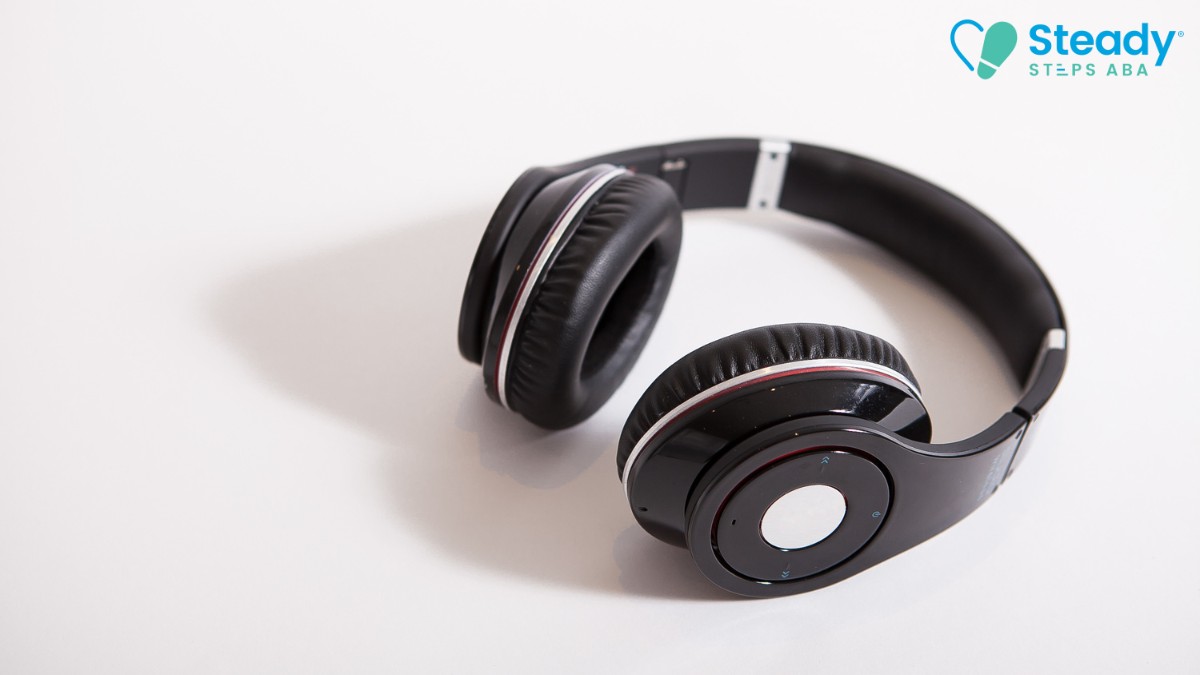
What are the Risks or Downsides of Using Noise-Cancelling Headphones Too Much?
While noise-cancelling headphones offer many benefits, overdependence can be counterproductive. Like any sensory support, they should be used with a purpose. Constant use can reduce a child’s tolerance to normal sounds and interfere with developing natural coping strategies. It can also isolate them socially if worn during group activities.
Use noise-cancelling headphones intentionally and balance them with exposure to manageable levels of sound. A qualified behavior therapist can help design a plan that includes gradual desensitization or sensory accommodations as needed.
Are There Alternatives to Noise-Cancelling Headphones?
If your child doesn’t like the feel of headphones or needs lighter options, there are other tools that can help reduce sensory overwhelm from sound. What matters most is finding what works for your child.
Here are some alternatives to consider:
1. Noise-Dampening Earplugs
These soft, reusable earplugs lower sound input without completely blocking noise. They’re discreet, lightweight, and ideal for children who are sensitive to pressure on their heads or ears.
2. Earmuffs or Defenders
Designed for passive noise reduction, these provide effective sound buffering without electronic components. They’re often used in sensory breaks or busy environments like assemblies, airports, or family outings.
3. Sound Machines or White Noise Apps
These tools produce calming background noise that masks unpredictable sounds. They’re great for bedrooms or study areas and help children relax, focus, or fall asleep more easily.
4. Sensory-Friendly Spaces
Creating a quiet area at home or school with carpets, curtains, and acoustic panels helps reduce echo and harsh noise. These spaces give children a reliable retreat from sensory overload.
Build Confidence and Independence With ABA Therapy
Noise-cancelling headphones for autism are a powerful tool—but they work best when part of a broader, individualized support plan. ABA therapy can help your child learn to self-regulate, tolerate everyday sounds, and navigate challenging sensory environments with more confidence.
At Steady Steps ABA, we provide compassionate, one-on-one ABA therapy in Maryland, tailored to your child’s unique needs. We understand how sensory sensitivities impact daily life and work with families to build meaningful, practical coping strategies.
Contact us today to learn how our ABA therapy in Maryland can support your child’s growth, independence, and comfort in their environment.

